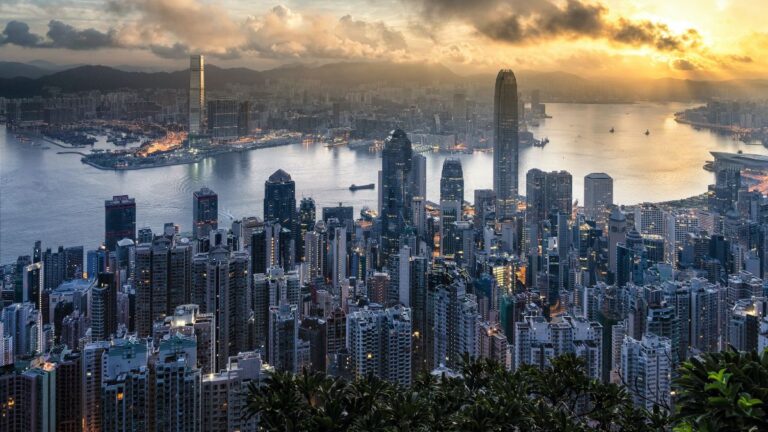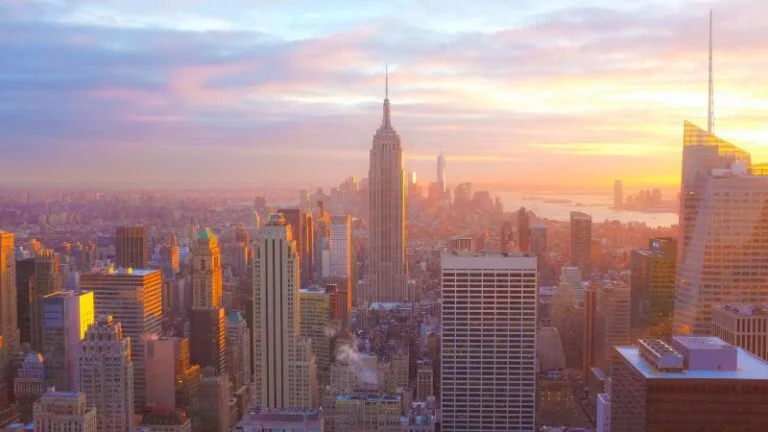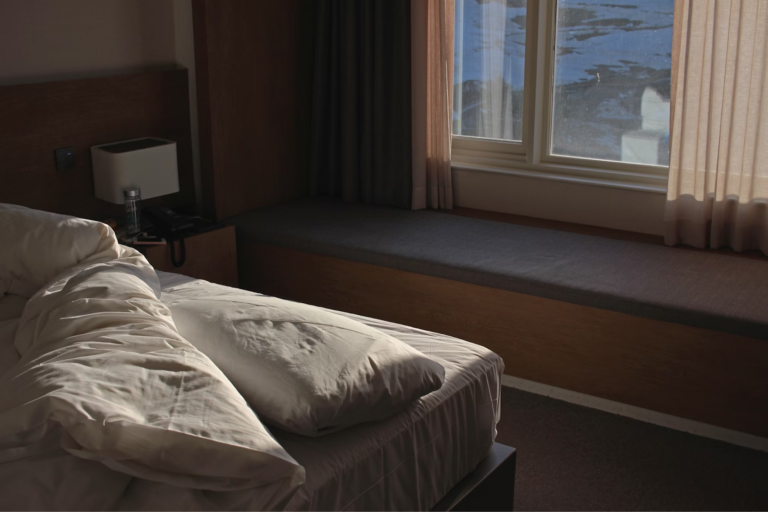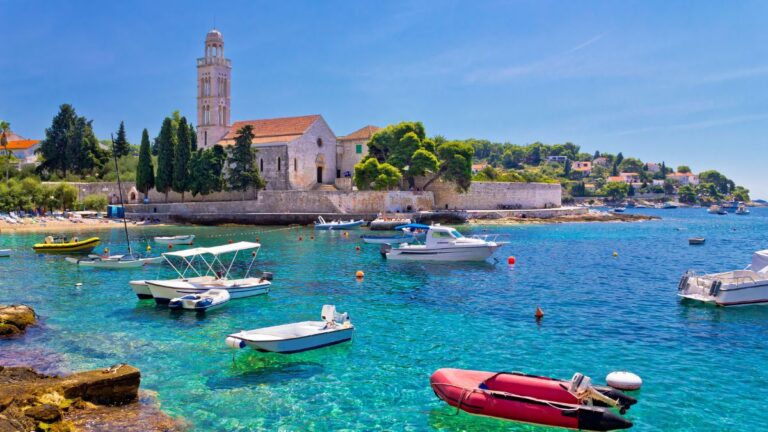Berlin Travel Guide: Tracing History and Hip Vibes in Germany’s Capital

As participants in Amazon Associates and other programs, we earn from qualifying purchases. This comes at no additional cost to you. For more details, see our Affiliate Disclosure.
Berlin stands as a city where history and contemporary culture collide and create a vibrant atmosphere that’s palpable at every turn. From the remnants of the Berlin Wall that once divided the city to the bustling art scenes and cutting-edge nightlife in districts like Kreuzberg and Friedrichshain, Berlin offers a unique blend of past and present. It’s a city that invites exploration, where every corner tells a story of triumph, tragedy, or transformation. Whether you’re delving into its rich historical past or immersing yourself in its dynamic present, Berlin captivates with its ability to embrace change while honoring its profound history.
The Berlin Wall: Echoes of the Past
The Berlin Wall, once a symbol of division during the Cold War, now stands as a poignant reminder of Berlin’s tumultuous past. Stretching over 140 kilometers originally, only remnants of the wall remain today, preserved as historical monuments. These sections are visited by millions, serving as stark reminders of the physical and ideological barriers that once separated East and West Berlin. The most famous segment, the East Side Gallery, is adorned with murals that speak of hope, reconciliation, and freedom.
Visiting the Berlin Wall today offers an emotional journey through Berlin’s darker times, yet also a reflection on peace and unity. The documentation centers and remaining watchtowers provide educational insights into the realities of life around the wall, detailing escape attempts and the lives affected by this concrete barrier. This site is a must-visit for those looking to understand the depth of Berlin’s resilience and recovery.
Brandenburg Gate: A Symbol of Unity
The Brandenburg Gate is more than just an architectural feat; it’s a national symbol of peace and unity. Built in the 18th century as a city gate, it has witnessed numerous historical events, including the tumultuous periods of the Napoleonic Wars, Nazi era, and Cold War. Today, it stands proud in the heart of Berlin, having seen the city’s transformation and the joyous celebration of Germany’s reunification in 1990, when thousands gathered to mark the end of division.
As one of Berlin’s most iconic landmarks, the Brandenburg Gate attracts visitors from all over the world. It is not only a beautiful example of neoclassical architecture but also a gathering place for various events and celebrations. Its powerful historical connotations and its role as a symbol of Berlin’s past and present make it a profound stop on any Berlin itinerary.
Museum Island: A Cultural Treasure Trove
Museum Island is a unique ensemble of five renowned museums situated on a small island in Berlin’s River Spree. This UNESCO World Heritage site forms one of the most important museum complexes in Europe, showcasing collections that span from prehistory through to the 20th century. The Pergamon Museum, Altes Museum, Neues Museum, Bode Museum, and Alte Nationalgalerie each offer visitors a distinct flavor of art and history, ranging from ancient artifacts to 19th-century paintings.
The architecture of the island’s buildings is as impressive as the art they house, with each museum presenting a different era of architectural styles. Museum Island is not only a hub for history buffs but also a beautiful spot for leisurely walks along the river, offering picturesque views and a tranquil escape from the city hustle. This cultural hub is a testament to Berlin’s rich history and its commitment to preserving and celebrating art across ages.
East Side Gallery: Art on the Remnants of Division
The East Side Gallery stands as a vibrant declaration of freedom and creativity on what was once a part of the Berlin Wall. Stretching 1.3 kilometers along the Mühlenstraße, this open-air gallery is one of the largest remaining sections of the Wall and is now adorned with over 100 murals painted by artists from around the world. These artworks reflect themes of hope, peace, and political commentary, making it a profound canvas that communicates universal messages across cultural boundaries.
This gallery is not just about art; it’s about transformation—a physical wall once meant to divide has been turned into a symbol of unity and expression. The East Side Gallery serves as a reminder of the power of art to enact change and provoke thought, drawing visitors who come to contemplate the expressive works and the historical significance of the medium they are painted on.
Tiergarten: Green Space in the Heart of the City
Tiergarten is Berlin’s most popular inner-city park, offering sprawling greenery, tranquil ponds, and shaded paths across its 210 hectares. Originally a hunting ground for Prussian royalty, it has evolved into a beloved public park where city dwellers can jog, picnic, and unwind. The park also contains several memorials and sculptures, as well as the famous Berlin Zoo, making it a diverse environment where nature and culture intertwine.
Within Tiergarten, the Victory Column and Bellevue Palace provide historical contexts and additional attractions for visitors. Whether you’re looking to escape the urban noise for a peaceful walk, engage in recreational activities, or explore some of Berlin’s landmarks, Tiergarten offers a perfect mix of natural beauty and cultural heritage, making it a vital part of any visit to the city.
The Dynamic District of Kreuzberg
Kreuzberg is known for its vibrant culture and diverse community. This dynamic district is the heart of Berlin’s counterculture, boasting an eclectic mix of cafes, shops, and galleries that reflect its multicultural population. At the core of Kreuzberg’s appeal is its energetic atmosphere, where the traditional meets the alternative. The annual May Day celebration highlights this spirit, with street festivals and demonstrations that draw crowds from across Berlin.
Kreuzberg is also renowned for its nightlife, with an array of bars and clubs that cater to a wide range of musical tastes and lifestyles. The district’s creative vibe is palpable, with street art adorning many of its buildings. For those wanting to experience a less conventional side of Berlin, rich with artistic expression and community spirit, Kreuzberg is the place to be.
Potsdamer Platz: Rebirth of a Public Square
Potsdamer Platz is a symbol of Berlin’s rebirth and modernity. Once a desolate no-man’s-land during the Cold War, today it stands as a bustling plaza at the heart of Berlin’s entertainment and business sectors. The square is surrounded by striking modern architecture, such as the shimmering towers designed by Renzo Piano and the iconic Sony Center, whose roof is designed to mimic Mount Fuji in Japan. This transformation from a war-torn intersection to a vibrant public space is reflective of Berlin’s overall resilience and forward-thinking attitude.
The area around Potsdamer Platz is packed with cinemas, shops, restaurants, and theaters, making it a cultural and commercial hub. During the Berlinale – Berlin’s international film festival – Potsdamer Platz becomes a gathering place for celebrities and cinephiles from around the globe. The square’s dramatic history and contemporary significance offer a fascinating glimpse into Berlin’s complex urban fabric.
Holocaust Memorial: Remembering the Shadows
The Holocaust Memorial, officially known as the Memorial to the Murdered Jews of Europe, is a stark, moving tribute to the Jewish victims of the Holocaust. Consisting of 2,711 concrete slabs arranged in a grid pattern on a sloping field, the design by architect Peter Eisenman creates an uneasy, confusing atmosphere intended to represent a supposedly ordered system that has lost touch with human reason. Visitors walking through the memorial find themselves on uneven ground, which evokes a sense of disorientation and isolation.
Located near the Brandenburg Gate, this powerful and contemplative space encourages reflection on the horrors of the Holocaust. The underground information center provides biographies of some victims, personalizing the immense human tragedy and reinforcing the memorial’s emotional impact. This site is a must-visit for those looking to honor the memory of those lost and to reflect on the implications of human actions.
Berlin’s Nightlife: From Techno to Indie
Berlin is celebrated worldwide for its thriving nightlife and status as a global music and party capital. The city’s club scene is diverse, ranging from the gritty Berghain, famous for its techno beats and strict door policy, to smaller indie clubs scattered throughout the city. Berlin’s clubs and bars are integral to its identity, often housed in repurposed spaces such as abandoned warehouses or old power plants, adding an industrial chic that is distinctly Berlin.
The nightlife in Berlin goes beyond just music; it’s a cultural phenomenon that embodies the city’s love for freedom and self-expression. Clubs in Berlin often support a progressive, inclusive atmosphere, where everyone is welcome regardless of background. For many, a night out in Berlin is not just a party but a participation in a cultural experience that challenges conventional norms and celebrates diversity.
The Currywurst Experience: Berlin’s Culinary Icon
Currywurst is a beloved Berlin street food that combines German sausage with a distinctive curry-flavored ketchup, typically served with fries or bread. This dish was invented in Berlin in 1949 by Herta Heuwer, who started selling it to construction workers rebuilding the devastated city. It quickly became a culinary symbol of Berlin’s post-war recovery and has remained a staple ever since.
Today, you can find Currywurst stands throughout Berlin, each claiming to serve the best version of this iconic dish. For a deeper dive into its history, the Deutsches Currywurst Museum was dedicated to exploring the impact and culture surrounding Currywurst before it closed. Sampling Currywurst is a must for any visitor, offering a taste of Berlin’s history and its continuing love for this simple, yet delicious dish.






